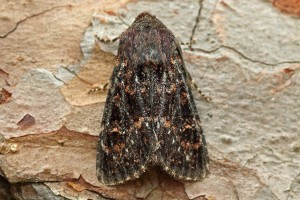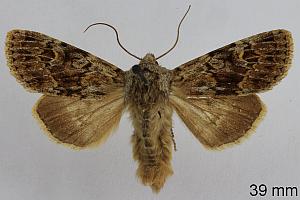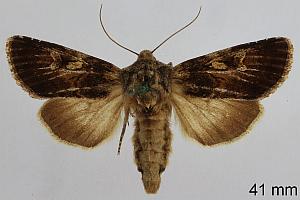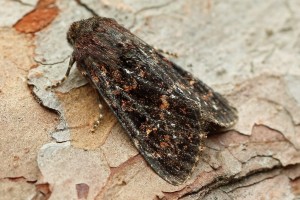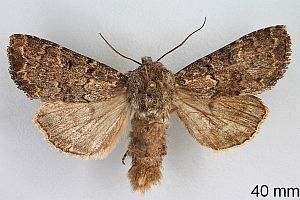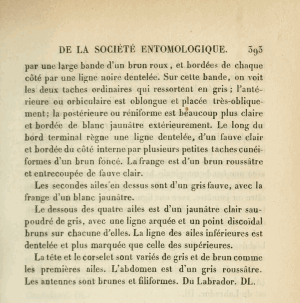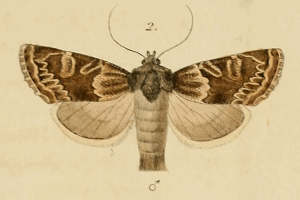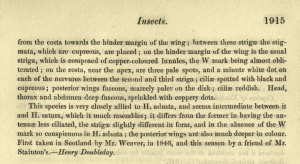

 +7Kontinente:EUNA
+7Kontinente:EUNA2. Diagnose
2.1. Männchen
2.2. Weibchen
2.3. Erstbeschreibung
2.4. Beschreibung als Hadena assimilis
3. Weitere Informationen
3.1. Andere Kombinationen
- Hadena exulis Lefèbvre, 1836 [Originalkombination]
3.2. Synonyme
- Hadena gelata Lefèbvre, 1836
- Exarnis difflua Geyer, 1837
- Hadena marmorata Zetterstedt, [1839]
- Apamea assimilis (Doubleday, 1847)
- Abromias assimilis (Doubleday, 1847) [so bei Zilli et al. (2005)]
- Crymodes gelida Guenée, 1852
- Crymodes poli Guenée, 1852
3.3. Unterarten
- Apamea exulis alticola (Smith, 1891)
3.4. Taxonomie und Faunistik
Was ist Apamea exulis und wo kommt sie vor? Zwei Zitate geben das Spannungsfeld wieder:
- "So far known only from the Scottish Highlands, Orkney Islands, Shetland Islands, and, in subsp. jenskjeldi, Faroe Islands." (Zilli et al. 2005)
- "Holarctic. The range of A. exulis is restricted in Europe to the north-western areas, from Scotland, the Orkney, Shetland and Faroe Islands, Iceland and Svalbbard, and the northern areas of Fennoscandia". (Fibiger et al. 2010)
(Fibiger et al. 2010: 225) helfen, dieses Spannungsfeld ein bisschen zu verstehen: "The taxonomic interpretation of the Apamea exulis species complex is one of the most difficult problems in which three rather controversial opinions have been expressed in the last five years; all three views have their advantages and disputable points. In Noctuidae Europaeae 8: 151-155, the complex is divided into three species, Apamea (as Abromias) exulis, A. groenlandica and A. assimilis (with its subspecies A. a. jenskjeldi). In the MONA series (Mikkola et al. (2009)) all European members of the A. zeta complex are included in A. zeta as mere synonyms of the nominotypical subspecies and exulis is defined as a subspecies of A. zeta [...] In the Witt Catalogue series, a third position is proposed by Zilli et al. (2010). These authors distinguished of Eurasiatic species within the zeta-group [...]. In their viev, groenlandica, assimilis and jenskjeldi are included in a single circumboreal species, A. exulis, and no subspecies are distinguished. [...]". Die Autoren diskutieren auch vorhandene Barcoding-Ergebnisse und müssen dabei feststellen, dass sie nicht zwingend für getrennte Arten sprechen - aber auch nicht zwingend dagegen. Aarvik et al. (2017: 147) folgen Zilli et al. (2010), führen für Skandinavien also nur A. exulis an. Im Lepiforum wird Apamea groenlandica vorerst noch als eigene Art mit umstrittener Artberechtigung geführt.
(Autor: Erwin Rennwald)
3.5. Literatur
- Aarvik, L., Bengtsson, B.Å., Elven, H., Ivinskis, P., Jürivete, U., Karsholt, O., Mutanen, M. & N. Savenkov (2017): Nordic-Baltic Checklist of Lepidoptera. — Norwegian Journal of Entomology - Supplement No. 3: 1-236. [PDF auf entomologi.no]
- Beschreibung als Hadena assimilis: Doubleday, H. (1847): Descriptions of New British Lepidoptera. — The Zoologist: A Popular Miscellany of Natural History 5: 1914-1916. London (John van Voorst).
- Fibiger, M., L. Ronkay, J.L. Yela & A. Zilli (2010): Noctuidae Europaeae. Volume 12. Rivulinae, Boletobiinae, Hypenodinae, Araeopteroninae, Eublemminae, Herminiinae, Hypeninae, Phytometrinae, Euteliinae, and Micronoctuidae. Including supplement to volumes 1-11. — 451 S.; Sorø (Entomological Press).
- Haggett, G. M. (2017): Further illustrated studies of Lepidoptera larvae: Apamea exulis (Lefebvre), ssp. assimilis (Doubleday), the Northern Arches (Noctuidae). — British Journal of Entomology and Natural History 30 (2): 69-74.
- Erstbeschreibung: Lefèbvre, A. (1836): Description de quelques lépidoptères nocturnes hyperboréens. — Annales de la Société entomologique de France 5: 389-401, pl. X. Paris (Méquignon-Marvis, pére et fils).
- Zilli, A., Ronkay, L. & M. Fibiger (2005): Noctuidae europaeae. Volume 8. Apamaeini. — 323 S., Farbtafeln; Sorø (Entomological Press).








